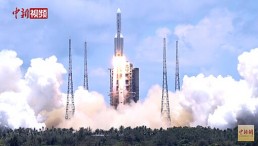We like to think of ourselves as this ultramodern society that has transcended the need to live in harmony with nature. Is it raining? Build a roof. Want a city in the middle of the desert? Build canals and invent air conditioning. Sea levels rising? Just build floating cities. No natural phenomenon is so big that we can't "out invent" the problem.
Now, whether we believe this or not is one thing, and whether it's true is another. However, there is a more important question in this situation: Should we try to boldly ignore the natural world and force our will to grow businesses and live our lives? Well, maybe not. That's not just coming from an environmentalist attitude, either. For businesses especially, there is growing evidence that trying to bully nature in order to drive your business is a losing proposition. A science-driven analysis was published, indicating that weather can negatively affect your business. While that statement on its own is a bit obvious, what is less obvious is that a business that tries to push through nature can actually be less profitable than a business that works with nature.
By paying attention to what events are happening around us, it is actually possible to adjust your practices to better cope with current and predicted weather. This requires solid predictions for your areas of interest, and recent information sources have opened up the necessary data to those with even basic programming skills. When using a weather API, it's possible for a business to look for weather phenomena that negatively affect them, and plan ahead to be in harmony with the weather instead of forcing its way through.
Let's discuss how this information can be pulled from platforms like Tomorrow.io, and what methods can be used to predict and work in better harmony, for better profitability.
Weather Woes
Depending on the business, weather can cause some major issues, creating additional costs, disappointing customers, and damaging capital. Severe weather events are the most obvious cause for business interruption. Hurricanes, tornadoes, winter storms, all of these can quite literally destroy a business.
Checking in regularly to your weather sources can go a long way in getting the predictions you need to prep, secure, and lay low while the severe weather hits your buildings, product, equipment, and production team. This can feasibly be accomplished through traditional weather channels, but getting advanced alerts wherever you are is important as well. Some weather services provide this, and others allow for specific customization to your area of interest, weather event types, and the type of alerts that are sent.
Building out a customized approach to severe weather alerts can give a significant advantage over waiting to see a traditional weather channel or app. While hurricanes and winter storms are (mostly but not always) predicted in advance, sudden events like tornadoes, floods, and even fires can appear suddenly, and a few extra minutes of notice can literally save lives.
That said, while severe weather events can cause the most damage to a business, the current warning systems in place do often provide some time that can be used for protecting your assets and minimizing damage. Where much of the profitability drops hit a company are in the more subtle areas, and hit in a way that can scrape away profit without being glaringly obvious.
Creating Harmony and Profitability
So what type of weather issues are more subtle but can skim away profitability? Well, this depends on your type of business, but elements such as rain can affect on time delivery from both your supply chain and what you send to customers.
Temperature is a major factor in utilities, either causing higher costs when trying to compensate for extreme highs and lows, or creating a dangerous and costly environment if air conditioning or heating aren't applied. Many businesses are affected greatly by wind as well (eg., construction sites using cranes). If work is not timed to be harmonious with when the wind is lower vs. higher, problems for the business can arise.
So how do we create this harmony? First, the business should evaluate all weather elements that create profitability issues. This is specific to each company, and could include (in addition to severe weather) rain, moisture/humidity, temperature, wind, and more.
Once the key elements are decided, it's important to find the weather data (as mentioned above, Tomorrow.io's API data is especially robust) from a solid source, and get specifically the hyperlocal weather data. This will prevent a general forecast from masking key elements that affect your immediate area.
For each element you measure, it is critical that you look at various ways to work around the weather, not through it. For instance, a consistent look at rain for deliveries and routes that are most vulnerable could help prioritize those areas most affected. Work shifts could adjust to better account for the moderate parts of the day, at least for some of the crew. And wind warnings could adjust construction crew setups, providing for more productive hours each day.
Final Thoughts
Weather is fascinating to us, and although a part of us may want to punch through any weather that comes our way, it's important to see that there are ways for businesses to better work in harmony with nature. By ensuring a live feed of data on a particular hyperlocal area, a business can prevent more and more clashes with nature, ensuring a more profitable bottom line. This type of harmony creates real power and real profitability.
* This is a contributed article and this content does not necessarily represent the views of sciencetimes.com















